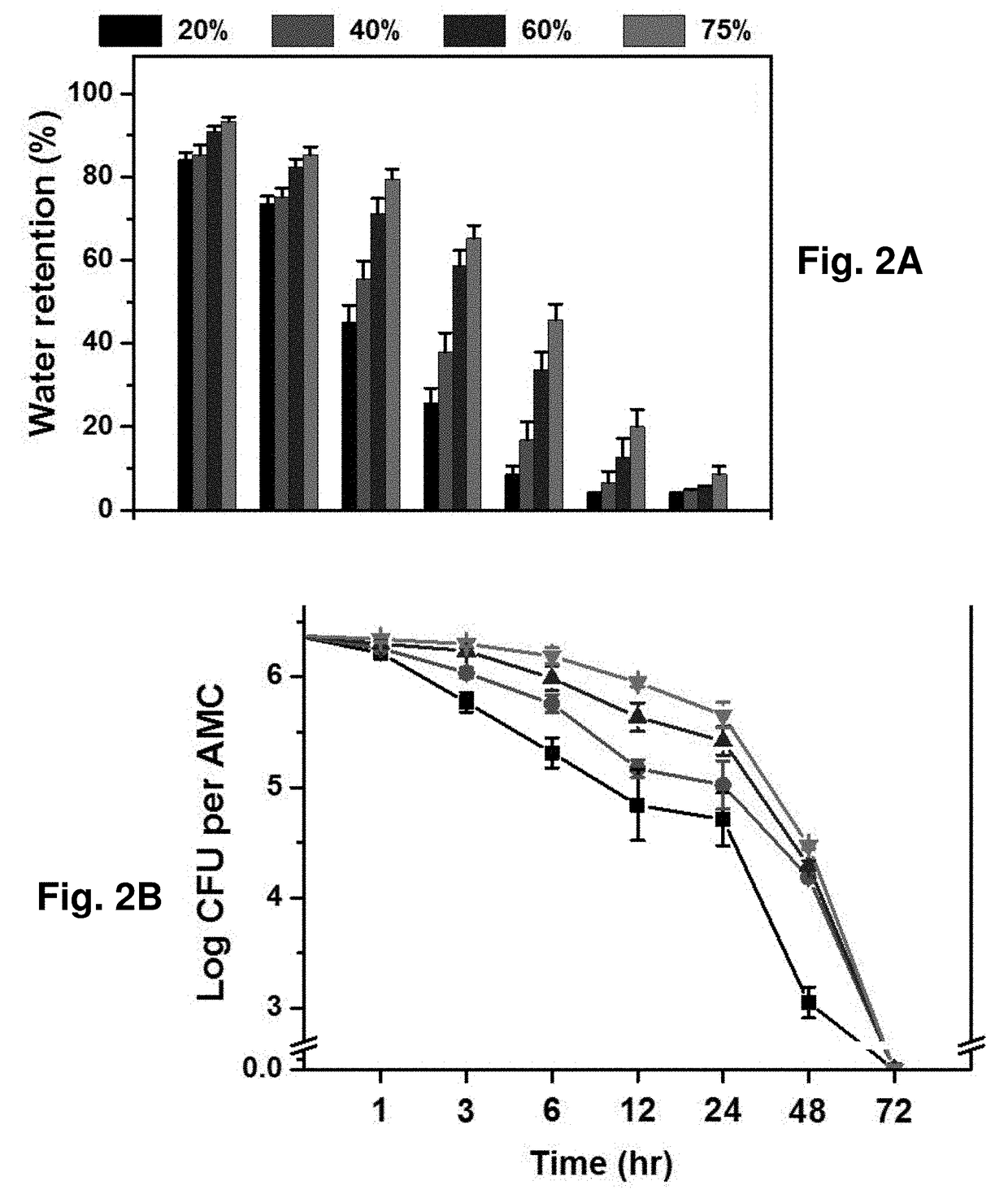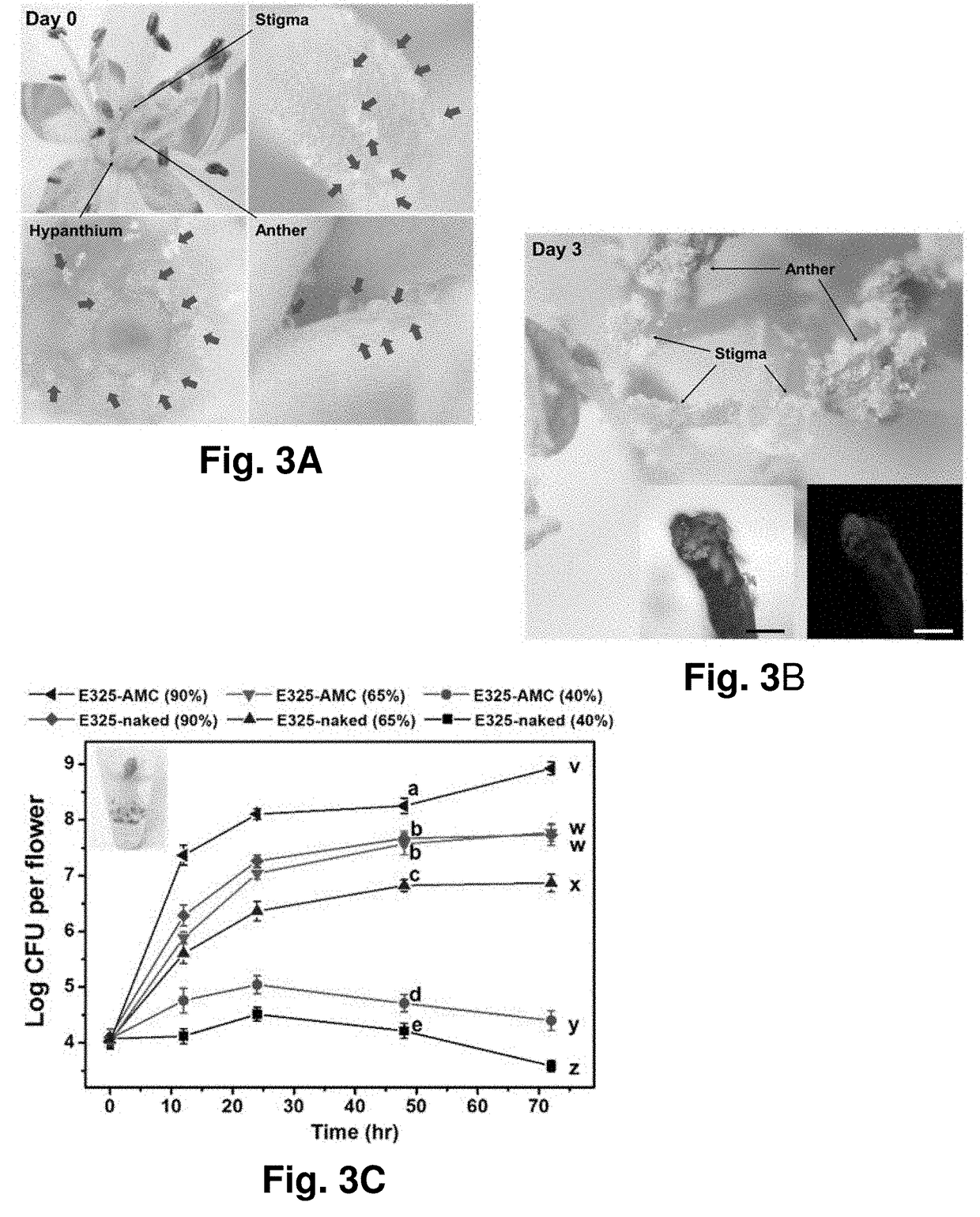Encapsulated Biocontrol Agents
a biocontrol agent and encapsulation technology, applied in the field of encapsulated biocontrol agents, can solve the problems of increasing the risk of infection, inconsistent suppressive action, and the potential threat of antibiotics to human health, and achieves the effects of prolonging the storage viability of a live microorganism, enhancing survival, and prolonging storage viability
- Summary
- Abstract
- Description
- Claims
- Application Information
AI Technical Summary
Benefits of technology
Problems solved by technology
Method used
Image
Examples
example 1
Materials and Methods
Materials
[0104]Sodium alginate, Tween 20, sodium citrate, CaCl2, glycerol, trehalose, and maltodextrin were purchased from Sigma-Aldrich (Milwaukee, Wis., USA). Luria-Bertani (LB) broth and agar were purchased from Fisher Scientific (Waltham, Mass. USA) and BD (Franklin Lakes, N.J., USA), respectively. All chemicals were used without further purification.
Bacterial Strain and Culture Conditions and Plant Material
[0105]P. agglomerans strain E325 was originally isolated from Gala apple blossoms near Wenatchee, Wash., in 1994 [10] and E. amylovora strain Ea153 was obtained from K. Johnson, Oregon State University, Corvallis. E325 and Ea153 are resistant to rifampicin and nalidixic acid, respectively. Strain E325 was transformed with a plasmid carrying the rfp gene (pMP4662) [21]. The rfp gene-labeled E325 (rfp-E325) was used to observe the antagonist on plant tissues ex vivo. The bacteria were stored in 15% glycerol at −70° C. and incubated in LB broth containing 10...
example 2
Microencapsulation
[0112]AMCs 80 μm in diameter were employed to encapsulate E325. The capsule size was selected to effortlessly cover the main target sites, i.e., the stigmatic (2) and hypanthial (2-3 mm2) surfaces of flower. FIG. 1 shows the optical images of the E325-encapsulating AMCs prepared by the PPF method, illustrating that the E325 cells multiply in the capsules as a function of time.
example 3
Moisture Retention of AMCs and In Vitro Survivability of Encapsulated E325 at Various RH
[0113]FIG. 2(a) shows the water retention property of the AMCs at 25° C. / 20, 40, 60 and 75% RH, displaying that the evaporation of water from the AMCs increased with decreasing RH during the 3-day period. At 20 and 75% RH, the water retention after 12 h was 5 CFU / AMC for 1 day, exhibiting the positive effect of AMCs on the survival of E325. It was intriguing that the encapsulated cells exhibited a meaningful survivability even at 20% RH for 2 days.
PUM
 Login to View More
Login to View More Abstract
Description
Claims
Application Information
 Login to View More
Login to View More - R&D
- Intellectual Property
- Life Sciences
- Materials
- Tech Scout
- Unparalleled Data Quality
- Higher Quality Content
- 60% Fewer Hallucinations
Browse by: Latest US Patents, China's latest patents, Technical Efficacy Thesaurus, Application Domain, Technology Topic, Popular Technical Reports.
© 2025 PatSnap. All rights reserved.Legal|Privacy policy|Modern Slavery Act Transparency Statement|Sitemap|About US| Contact US: help@patsnap.com



